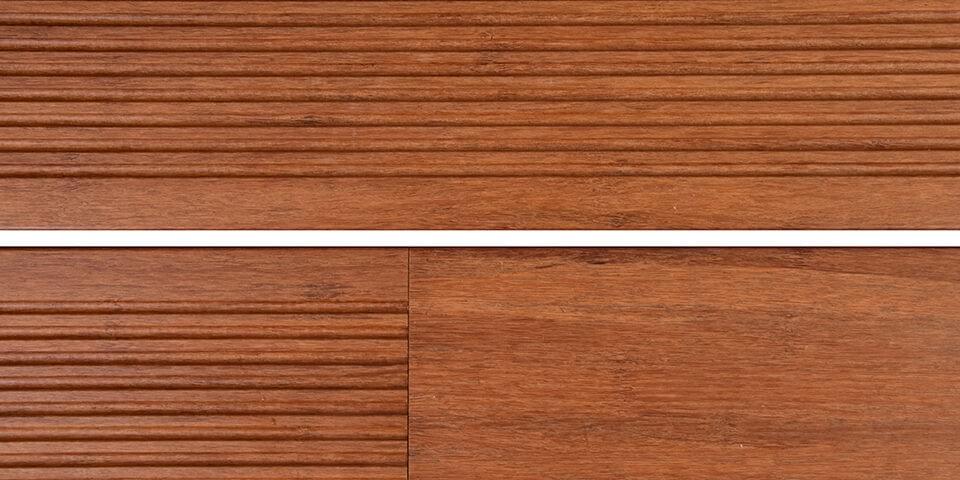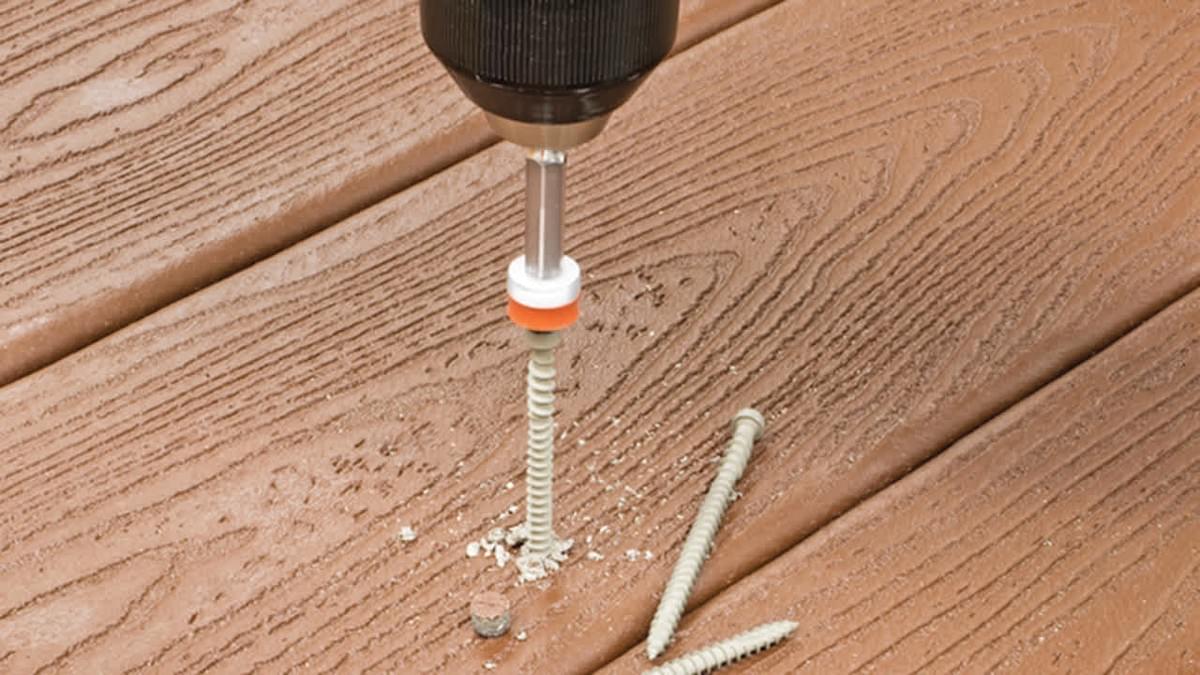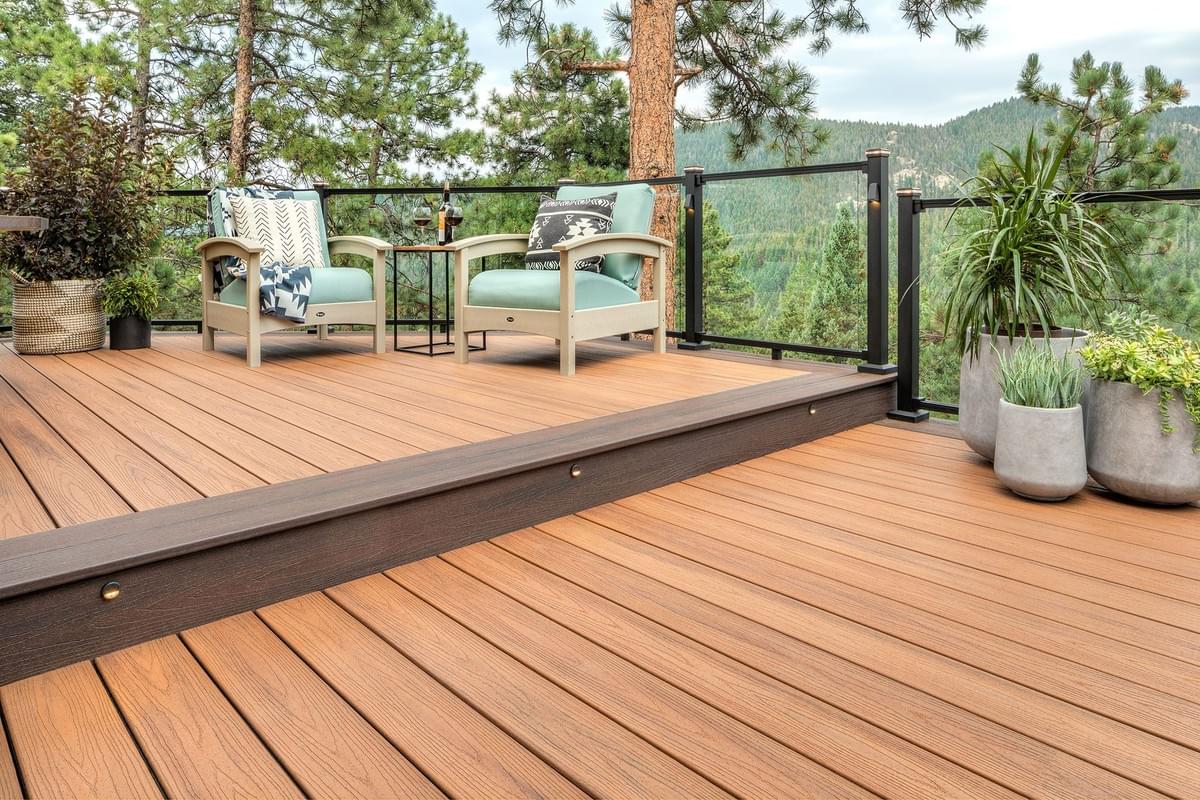Introduction
Grooved decking has gained popularity for its unique design and functionality, offering both aesthetic appeal and practical benefits. However, understanding what sets grooved decking apart from its smooth counterparts is essential for making an informed decision about your outdoor oasis.
Overview of Grooved Decking
Grooved decking features a series of channels or grooves along the surface of the boards, which not only enhances traction but also adds a distinctive visual element to your deck. This design makes it particularly appealing for areas that see a lot of foot traffic or are prone to wet conditions, as it helps reduce slipping hazards. Whether you’re looking for treated wood for a deck or considering composite options, grooved decking offers versatility that can suit various styles and preferences.
What Makes Decking Boards Unique
Decking boards come in various materials and finishes, each offering unique characteristics that cater to different needs and aesthetics. The texture, durability, and maintenance requirements can vary significantly between smooth decking boards and their grooved counterparts. Understanding these differences is crucial when selecting the best decking material that aligns with your lifestyle and design vision.
The Appeal of Treated Wood for Decks
Treated wood for decks is particularly sought after due to its resistance to rot, insects, and weather elements, ensuring longevity in outdoor settings. This type of wood not only provides strength but also boasts a natural beauty that enhances any landscape design. For homeowners seeking both durability and charm in their outdoor spaces, treated wood remains one of the top choices among available decking materials.
Advantages of Grooved Decking

These boards offer a range of benefits that can enhance your outdoor space while providing practical solutions to common decking challenges. From safety features to aesthetic versatility, grooved decking might just be the best decking choice for your next project.
Enhanced Traction and Safety
One of the standout advantages of grooved decking is its ability to provide enhanced traction and safety. The grooves in these boards create a textured surface that significantly reduces the risk of slipping, especially when wet—something smooth decking boards can struggle with. For families with children or pets, this added safety feature is invaluable and makes treated wood for decks an appealing option.
Additionally, grooved surfaces help channel water away from the deck's surface, reducing puddles that could lead to accidents. This makes them particularly suitable for areas prone to rain or snow, where slick conditions are a concern. Overall, investing in grooved decking not only elevates your outdoor aesthetics but also prioritizes safety.
Effortless Installation Process
Another significant advantage of grooved decking is its effortless installation process. Unlike traditional smooth decking boards that may require more intricate fastening methods, grooved boards often utilize hidden fasteners that make assembly a breeze. This means less time spent on installation and more time enjoying your new outdoor space with treated wood for a deck.
Moreover, many manufacturers design their grooved options specifically for easy alignment and spacing during installation—perfect for DIY enthusiasts looking to tackle their own projects without hiring professionals. With fewer visible screws or nails on the surface, you achieve a clean finish that's both functional and visually appealing.
Aesthetic Appeal and Versatility
Grooved decking offers an aesthetic appeal that's hard to beat; its unique texture adds depth and character to any outdoor setting. Whether you're looking for rustic charm or modern sophistication, these boards can cater to various design preferences while complementing different styles of landscaping or architecture—all while maintaining compatibility with various types of treated wood for decks.
The versatility doesn't stop there; you can choose from various colors and finishes that align perfectly with your vision for outdoor living spaces. Plus, if you ever decide to change up your decor theme or color palette in the future, grooved boards easily adapt without requiring complete replacement—making them an excellent long-term investment in quality decking material.
Disadvantages of Grooved Decking

While grooved decking offers various benefits, it’s essential to consider some of its drawbacks. Understanding these disadvantages can help you make an informed decision when comparing it with other options like smooth decking boards. Let's delve into the challenges associated with grooved decking.
Maintenance and Cleaning Challenges
One significant drawback of grooved decking is the maintenance and cleaning required to keep it looking its best. The grooves can trap dirt, leaves, and debris, making cleaning a bit more labor-intensive compared to smooth decking boards. Regular sweeping and occasional deep cleaning are necessary to prevent grime buildup, which can detract from the overall appeal of your treated wood for a deck.
Additionally, if you allow mold or mildew to develop in those grooves, it could lead to slippery surfaces that compromise safety—something no one wants on their deck! Unlike some smooth decking options that may require less frequent maintenance due to their design, grooved decking demands a bit more attention from homeowners who want their outdoor spaces pristine.
Risk of Water Accumulation
Another concern with grooved decking is the potential for water accumulation within the grooves themselves. When rain falls or snow melts, water can get trapped in these channels instead of draining away efficiently like it would on smooth surfaces. This standing water not only poses a risk for slips but also contributes to wood rot over time if not addressed properly.
Moreover, prolonged moisture retention can lead to unpleasant odors and attract unwanted pests—definitely not what you want when enjoying your outdoor retreat! Homeowners should be proactive about ensuring proper drainage around their decks or consider alternative materials that mitigate this issue more effectively than traditional treated wood for decks.
Limited Options in Treated Wood for Deck
Lastly, while treated wood remains a popular choice for building decks, there are limited options available specifically designed as grooved boards. Many manufacturers focus on producing smooth decking boards or standard planks without grooves due to market demand and aesthetic preferences. This limitation might restrict your choices when searching for the best decking material that meets both functional needs and personal style.
Furthermore, opting for treated wood means being mindful of chemical treatments used during manufacturing; some may prefer eco-friendly alternatives over traditional treatments that come with certain environmental concerns. If you're leaning towards sustainable practices in your outdoor living space design but still desire grooved aesthetics, exploring composite materials could be beneficial as they offer durability without compromising environmental integrity.
Comparison with Smooth Decking Boards

Pros and Cons of Smooth Decking
Smooth decking boards offer a sleek, polished finish that many homeowners find visually appealing. This aesthetic quality makes them a popular choice for those seeking the best decking to complement their home’s design. However, smooth surfaces can be slippery when wet, posing a safety risk that is less prevalent with grooved options.
On the downside, smooth decking boards may require more maintenance to keep them looking pristine over time. The lack of grooves means that dirt and debris can accumulate more easily on the surface, necessitating regular cleaning. Additionally, treated wood for a deck often comes with a higher upfront cost compared to other materials, which could be a consideration for budget-conscious buyers.
Long-Term Durability Analysis
In terms of durability, both smooth and grooved decking boards can hold up well if properly maintained; however, their longevity will depend on the specific type of decking wood used. Treated wood for decks is known for its resistance to decay and insect damage but may still require periodic sealing or staining to maintain its integrity over time. Conversely, composite materials are increasingly popular due to their resistance to fading and warping.
Smooth boards might show signs of wear faster than grooved ones due to their exposure; scratches and scuffs are more noticeable on flat surfaces. On the other hand, if you choose high-quality treated wood or composite options for your deck installation, you’ll likely enjoy long-lasting performance regardless of surface texture. Ultimately, considering factors like climate and usage patterns will help you gauge which option might offer better long-term durability.
Cost Discrepancies in Decking Materials
When comparing costs between smooth decking boards and grooved alternatives, it's essential to factor in not just material prices but also installation expenses over time. Generally speaking, smooth boards may be slightly cheaper initially but could lead to higher maintenance costs down the line due to cleaning requirements and potential refinishing needs. In contrast, while grooved options might carry a higher price tag upfront—especially when considering treated wood for decks—they often provide greater value through reduced upkeep.
Moreover, if you're leaning towards eco-friendly choices like composite materials as an alternative for your deck project, these could come at varying price points depending on brand reputation and sustainability features offered by manufacturers like Composite Decking Inc. Understanding these cost discrepancies will help ensure you're making an informed decision about which type of decking material best fits your budget while delivering desired aesthetics and functionality.
Best Practices for Choosing Decking Material

Evaluating Your Space and Needs
Before diving into the world of decking wood, take a moment to evaluate your space and how you plan to use it. Are you looking for a cozy spot for family gatherings, or a robust area for entertaining guests? The purpose of your deck will influence whether treated wood for a deck or composite materials are more suitable, as well as the type of finish—grooved or smooth—best suited for your vision.
Consider factors such as climate, sun exposure, and foot traffic when selecting your decking material. For instance, if you're in an area with heavy rainfall, opting for treated wood may provide better durability against moisture compared to standard options. Additionally, think about aesthetics; grooved decking can add texture while smooth decking boards offer a sleek finish that complements modern designs.
Factors Influencing Longevity
Longevity is key when choosing between different types of decking materials like treated wood for decks or composite options. Several factors influence how long your chosen material will last: maintenance requirements, environmental conditions, and quality of installation all play pivotal roles in durability. For example, while both grooved and smooth decking boards can be appealing choices, their maintenance routines differ significantly.
Regular upkeep is essential to extend the life of any deck; this includes cleaning debris and checking for signs of wear or damage regularly. Moisture accumulation can be particularly detrimental to untreated wood but less so with properly treated options designed specifically for outdoor use. Therefore, investing in high-quality materials from reputable suppliers can ensure that you enjoy your outdoor space without constant worry about deterioration.
Recommendations from Composite Decking Inc
When navigating the vast array of options available in the world of decking material, Composite Decking Inc offers valuable insights tailored to meet diverse needs. They recommend exploring both treated wood options and composite materials depending on specific project requirements and personal preferences—each has its unique benefits worth considering seriously.
For those leaning towards traditional aesthetics without compromising on durability, their range includes both smooth decking boards and grooved alternatives that cater to various tastes while ensuring safety underfoot due to enhanced traction features found in grooved designs. Moreover, Composite Decking Inc emphasizes sustainability; their products often incorporate recycled materials which not only reduce environmental impact but also ensure longevity over time—a win-win situation!
In summary, whether you're drawn toward classic treated wood for decks or innovative composite solutions with customizable finishes like smooth or grooved styles—the right choice hinges on careful evaluation of space needs alongside expert recommendations from trusted sources like Composite Decking Inc.
Sustainable Alternatives in Decking

In an era where eco-consciousness is on the rise, sustainable alternatives in decking are gaining traction among homeowners and builders alike. The quest for decking materials that are not only beautiful but also environmentally friendly has led to innovative options that challenge traditional treated wood for decks. From reclaimed wood to advanced composite materials, there’s a world of possibilities that promise durability and sustainability.
Eco-Friendly Options in Decking Wood
When considering eco-friendly options in decking wood, reclaimed lumber stands out as a top choice. Sourced from old barns or factories, this decking material offers a unique charm and character while reducing waste and deforestation. Additionally, bamboo is becoming increasingly popular due to its rapid growth rate and minimal environmental impact, making it a sustainable alternative to traditional treated wood for a deck.
Another option gaining popularity is FSC-certified wood, which ensures that the timber comes from responsibly managed forests. By opting for these eco-friendly decking boards, homeowners can enjoy the aesthetic appeal of natural wood while supporting sustainable practices. Ultimately, choosing environmentally conscious decking options not only enhances your space but also contributes positively to the planet.
Benefits of Composite Materials
Composite materials offer an impressive array of benefits when it comes to decking solutions. These engineered products combine recycled plastics with wood fibers, creating a durable and low-maintenance alternative to traditional decking boards made from treated wood for decks. Unlike smooth decking boards or other natural woods that require regular staining or sealing, composite materials resist fading and warping while providing excellent traction.
Furthermore, composite decking is available in various colors and textures, allowing you to achieve the desired look without compromising on sustainability. This versatility makes it an ideal choice for those seeking both style and functionality in their outdoor spaces. By investing in composite materials as your primary decking material, you can ensure long-lasting beauty without harming the environment.
Trends in Sustainable Decking Solutions
As more people become aware of their ecological footprint, trends in sustainable decking solutions continue to evolve rapidly. One notable trend is the increasing demand for solar-powered lighting integrated into deck designs—perfectly complementing smooth decking boards while promoting energy efficiency at night! This innovation allows homeowners to enjoy their outdoor spaces sustainably after dark.
Additionally, modular deck systems are gaining popularity due to their ease of installation and minimal waste generation during construction—ideal for those who want quick results without sacrificing quality or sustainability! As consumers prioritize responsible sourcing practices when selecting their best decking options, manufacturers are responding by offering more eco-friendly products than ever before.
Ultimately, embracing sustainable alternatives not only enhances your outdoor area but also showcases your commitment to protecting our planet—all while enjoying the beauty of quality timber or innovative composites underfoot!
Conclusion

When it comes to decking, grooved decking offers a unique blend of benefits and drawbacks that homeowners should carefully consider. On the one hand, its enhanced traction and effortless installation make it an attractive choice for many. However, the maintenance challenges and potential for water accumulation can raise concerns, especially when comparing it to smooth decking boards.
Weighing the Pros and Cons of Grooved Decking
Grooved decking presents a compelling case for those seeking safety and aesthetic appeal in their outdoor spaces. The grooves provide excellent traction, reducing slip hazards—a major plus for families with children or pets. Nevertheless, the upkeep can be demanding; cleaning out debris from those grooves is no small task, which might make some homeowners lean towards smoother options like smooth decking boards.
Importance of Quality in Decking Boards
Choosing quality decking boards is paramount to ensure longevity and performance in your outdoor projects. High-quality treated wood for decks not only enhances durability but also contributes to a more visually appealing finish that can elevate your outdoor space's overall charm. Investing in the best decking materials pays off in the long run, as they withstand weather elements better than lower-quality alternatives.
Final Thoughts on Treated Wood for Decks
Treated wood for a deck remains a popular choice among homeowners due to its resilience against rot and pests while providing an attractive natural look. While grooved options have their merits, it's essential to evaluate personal preferences regarding maintenance and aesthetics before making a final decision on decking material. Ultimately, whether you opt for grooved or smooth decking boards, selecting high-quality products will ensure your deck stands the test of time.
